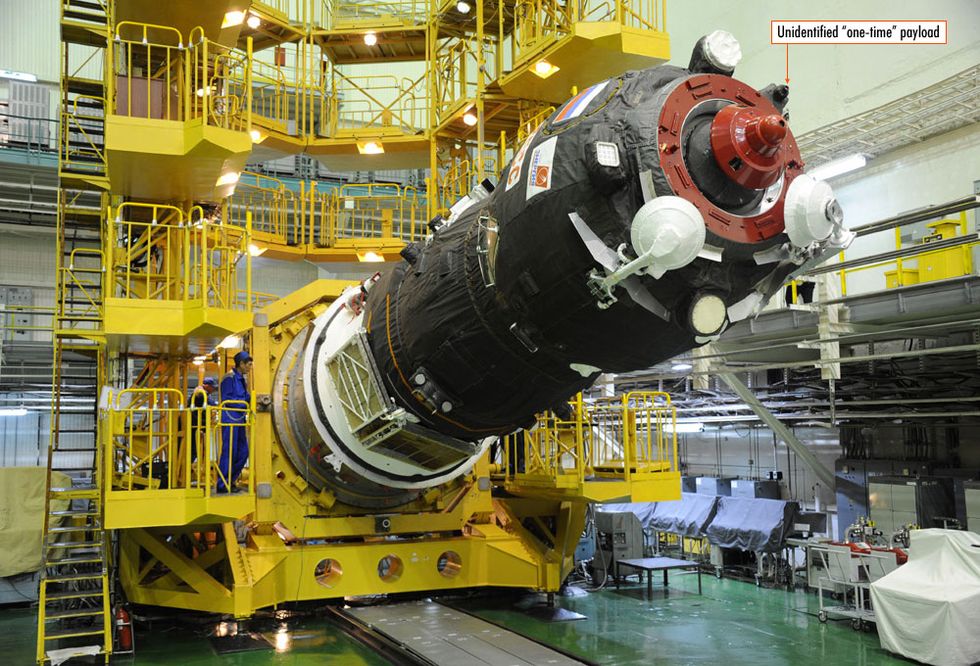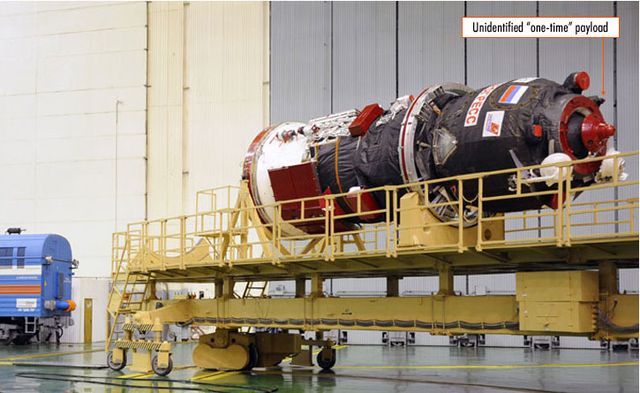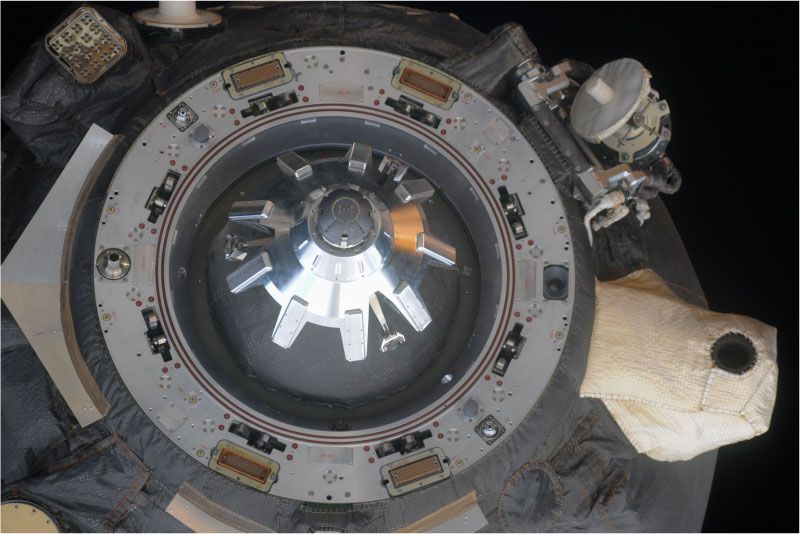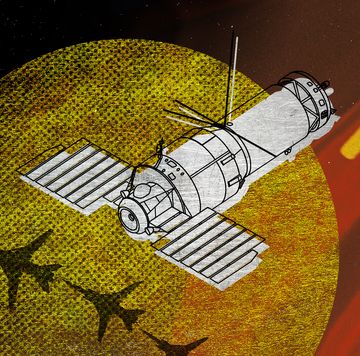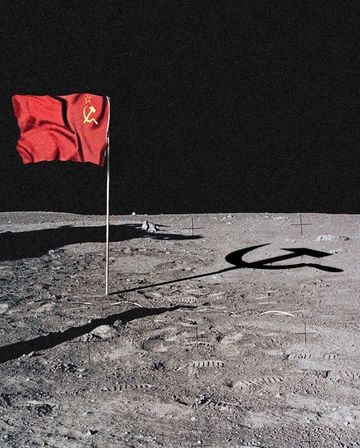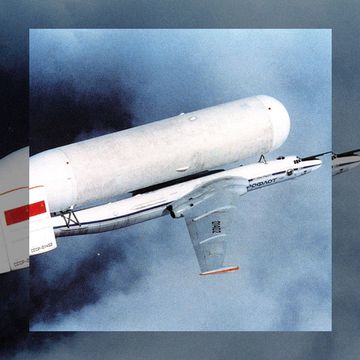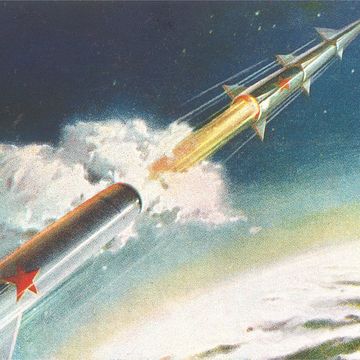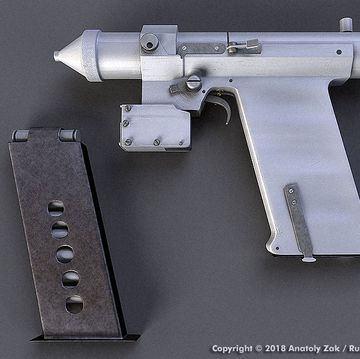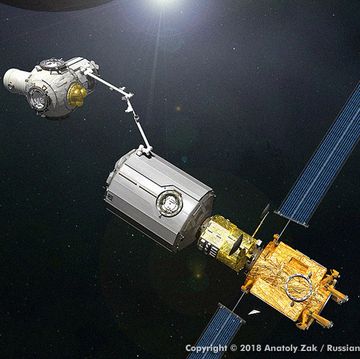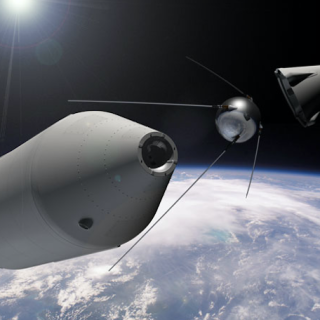Thursday's early morning launch at the Baikonur Cosmodrome in Kazakstan is a routine one, delivering fuel, water, and food for the six astronauts currently on board the International Space Station. But there's one thing that's definitely not routine. Russia's seven-ton Progress MS-07 tanker will be carrying a secret, a previously unseen instrument attached to the exterior front section of the spacecraft. NASA has no idea what it is.
NASA specialists spotted the unknown gizmo in official photographs of the Progress ship released during mission preparation. Since then, a number of pictures documenting the work on Progress MS-07 in Baikonur also showed the unidentified device, indicating that Russian authorities aren't really keeping it secret. But when NASA asked about the hardware, Russian officials said only that it would be a scientific payload intended for a one-time trip aboard the cargo ship. They provided no further details.
The brush-off response puzzled U.S. officials because all five space agencies involved in the ISS have shared information about all the hardware flying to or near the outpost. This is probably the first time in the nearly 19-year history of joint operations on board the ISS that one of the partners is delivering unexplained cargo to the station. (It's not the first time a partner has ran afoul of usual standards and practices. In June, a classified U.S. satellite reportedly made unexplained passes in the proximity of the station and no one is sure why.)
The location of this mystery experiment is familiar at least. In 2014, on the Progress M-24M, a similar spacecraft to the one being sent skyward on Thursday, Russian engineers used the spot to strap on the Otrazhenie-5 (reflection) experiment. This was an optical sensor designed to monitor atmospheric phenomena and its reflective properties. The observations with the Otrazhenie were short-lived, gathering data after the undocking from the station and before burning up in the Earth's atmosphere.
Such a study could have military benefits by perfecting reconnaissance and early warning sensors used to track missiles and other military targets. NASA engineers speculate that the unidentified instrument on the Progress MS-07 might be the latest incarnation of the Otrazhenie experiment, even though the hardware looks somewhat different. Really it's been the silence from Russian officials that's suspicious, a NASA source told Popular Mechanics.
According to the latest flight schedule, Progress MS-07 will dock at the ISS just three hours after launch at 5:32 a.m. EDT, cutting in half the fastest flight timeline. The spacecraft is expected to remain docked at the outpost until March 2018.
Anatoly Zak is the publisher of RussianSpaceWeb.com and the author of Russia in Space, the Past Explained, the Future Explored

